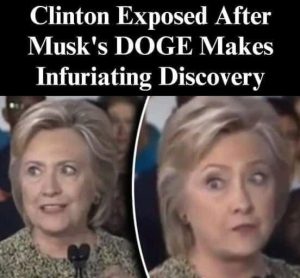Transportation Secretary Sean Duffy, a member of President Donald Trump’s administration, and former Secretary of State Hillary Clinton engaged in a contentious online debate on Elon Musk’s involvement in government operations. Musk’s work with the Department of Government Efficiency (DOGE), where he was assigned to find unnecessary spending within the U.S. Agency for International Development (USAID), was the main topic of the back and forth. When Duffy implied that Musk’s group was also assisting DOT in modernizing its aviation systems following two fatal plane crashes that happened during his brief tenure, the debate took a dramatic turn.

Clinton, a vocal opponent of the Trump administration, started the argument by replying to Duffy’s internet remarks. Former congressman and current Transportation Secretary Duffy had commended Musk’s DOGE team for their efforts to find and eliminate wasteful expenditure, especially at USAID, a department that had long been criticized for its lax control. Musk, who is well-known for his business endeavors like SpaceX and Tesla, was hired to spearhead efforts to enhance the Department’s operations.
Clinton swiftly retaliated against Duffy, raising questions about Musk’s involvement’s efficacy, especially in a government capacity. She suggested that Musk’s commercial interests would clash with the general welfare and questioned whether a billionaire businessman without any previous political experience should be in charge of such delicate issues. Clinton also voiced worries about Musk’s increasing clout in government agencies, wondering if his access to federal funds was an indication of the unbridled influence of tech tycoons on public policy.
Duffy pushed back against Clinton’s criticism and defended Musk’s participation in his typically direct response. He maintained that Musk and his group were a welcome change in a government that had long been beset by ineffective bureaucracy. According to Duffy, DOGE staff members led by Musk had already made significant progress in pinpointing USAID’s wasteful practices and were prepared to take on other urgent problems, such as modernizing the nation’s aviation infrastructure.
One of Duffy’s main arguments was that the recent fatal crashes in the American aviation system—which happened during his time as Secretary of Transportation—emphasized the urgent need to update and enhance safety procedures. In order to stop other tragedies, he said, Musk’s team was already working on improving the country’s aviation infrastructure using a tech-driven approach to problem-solving. At a time when government processes appeared to be bogged down in red tape and inefficiency, Duffy pointed out that Musk’s capacity to approach complicated systems with creative, unconventional solutions was just what the nation needed.
Clinton continued to worry about the increasing power of tech tycoons in politics, even as Duffy steadfastly defended Musk’s participation. She questioned whether it was proper for a private businessman—even one known for his inventiveness—to assume such a crucial position in the government. Musk’s growing involvement in public affairs has drawn criticism for potentially giving too much authority to those who would put their personal financial interests ahead of the requirements of the general public.
Clinton’s complaints were in line with larger worries about the growing power of billionaires in public life and politics. She argued that public officials, not private citizens with conflicting financial interests, should oversee government operations. Her comments emphasized the ongoing discussion on the impact of the private sector on public administration and the possible conflicts that can occur when influential people are granted access to sensitive government functions.
Duffy defended Musk by highlighting the value of creativity in government in addition to the billionaire’s technological experience. Duffy claims that Musk’s history of success with high-tech
